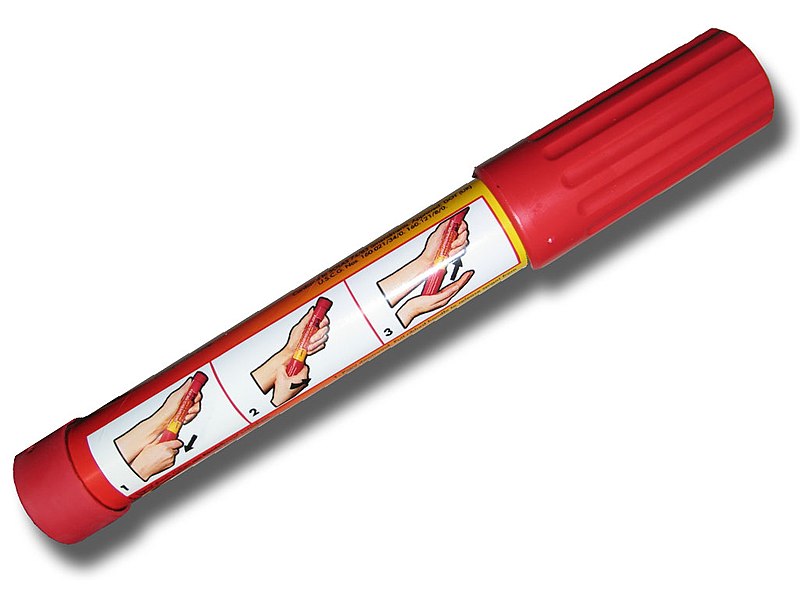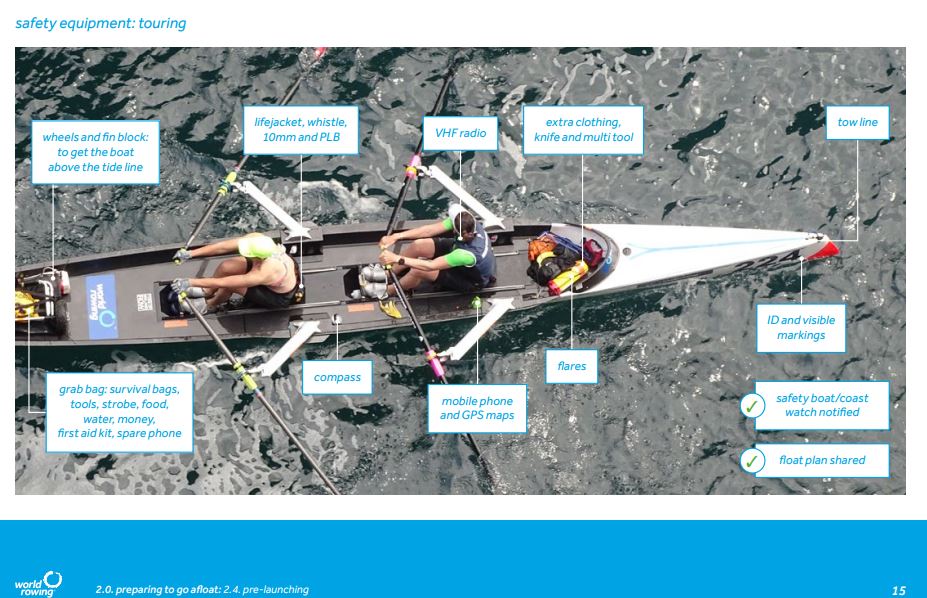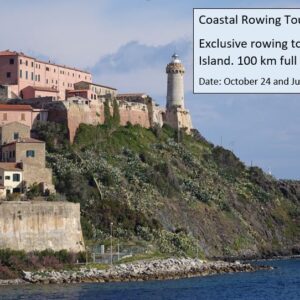

What’s the best way to protect your Coastal Boat from the heat?
What’s the best way to protect your Coastal Boat from the heat? And what can extreme heat do to your Coastal Boat? During the summer, many


The first coastal rowing tours have started again. This makes the topic of safety and safety equipment important again. Especially if you think about tours along the coast or island hopping, the subject of safety is always a top priority.
Most of the tour guides are passionate touring rowers and have a lot of experience. And no tour guide wants to get into distress at sea.
We recently spoke to Volker, Managing Director of the Rowing-in-Europe GMBH. Rowing-in-Europe is an organization that organizes professional rowing trips on coasts and rivers worldwide. He gave us some tips about the safety equipment a tour rower should have on board.
“Before every trip, we always do a risk assessment. Together with the crew we consider the equipment we should take, and how and where the equipment is placed.” Let’s have a look what makes sense from his experience:
You shouldn’t even think about these things anymore. They belong in every boat. Some people discuss the necessity of a compass. Again and again we hear the argument – we can see the coast and my cell phone has a GPS, why would I need a compass. Cell phones are good as long as there is reception and they have power. If a cell phone falls into the water or your dry bag drifts out of the boat – what then? A small waterproof and sandproof compass weighs only 150gr. and can be attached anywhere in the boat / outrigger. It’s a tiny piece of equipment, that may save your life.
What happens if a person falls off the boat? Different factors determine the quick and safe rescue and recovery of a person who has fallen overboard. Once the person is overboard, it is very difficult to get them back into the boat when the waves are rough, even more when the person has been injured. What can you do?
More ideas about safety equipment for coastal rowing tours: Minimum equipment (in German). Plus: Think about a throw bag.

Here are our recommendations for tour rowers who dare to venture further out at sea:
Rowing in Europe uses PLBs (Personal Locator Beacons) as safety equipment for coastal rowing tours. This is a signaling device similar to EPIRP, but not approved for ships but for people. They are attached to the person (life jacket, upper arm, etc.). These devices have to be officially registered. And every user needs to know what happens when the alarm is triggered. An irrevocable rescue operation is started. Once triggered, deactivating the alarm is no longer possible. You have to call the registration office personally and give the all-clear. Volker says to the topic: “It is annoying that we cannot register the PLB’s in Germany. Our Federal Network Agency needs the name of a ship and a ship license. There is no such thing for rowing boats”.
The solution: Most shops in Germany register the device with an ID in England but interestingly (or funnily) enough Switzerland and Austria are possible as well. PLBs are a sensible and affordable (less than 300€) aspect of safety equipment for ambitious rowing tours away from the nearby land.
If you are thinking about signaling devices to the rescue, you will likely think about signal flares. But do some research before buying. Not all signaling devices are allowed. Pyrotechnic distress signals that are shot out of the hand are subject to the Explosives Act. These signaling devices are not that easy to use.
T1 signaling devices can be acquired by anyone over the age of 18. Flares and distress signal transmitters with a rise of up to 80 meters (signal transmitters and their ammunition that are not subject to any explosive acts, e.g. Nico signal transmitters) are okay.
Of course, they only work if you keep them dry in the boat. And be careful with the ignition. Two years ago we burned our hands during an exercise.
There are a lot of checklists and guides from the sailing sport. FISA has also listed a few things here.


At some point, however, you will run out of space. Above all, you have to ask yourself the question: What makes sense? Coastal boats lie flat on the water. Do we need radar reflectors or inflatable floating buoys for the fog? Unlikely. Rowing in Europe usually takes the equipment listed below with them, even if it has never been used before. “I would rather change the equipment after 2-3 years than leave it completely. That would be foolish,” says Volker.
We would suggest the following as the minimum equipment:


What’s the best way to protect your Coastal Boat from the heat? And what can extreme heat do to your Coastal Boat? During the summer, many


Join us and row with us around Elba Island, Italy. Coastal Rowing vacation in Elba at its best. Rowing in Tuscany and Rowing in Europe


The Baltic Sea near Gdansk offers a beautiful and diverse environment for various activities. It was also choosen as host for the 2024 European Coastal
| Cookie | Duration | Description |
|---|---|---|
| VISITOR_INFO1_LIVE | 6 months | YouTube sets this cookie to measure bandwidth, determining whether the user gets the new or old player interface. |
| VISITOR_PRIVACY_METADATA | 6 months | YouTube sets this cookie to store the user's cookie consent state for the current domain. |
| YSC | session | Youtube sets this cookie to track the views of embedded videos on Youtube pages. |
| Cookie | Duration | Description |
|---|---|---|
| sbjs_current | session | Sourcebuster sets this cookie to identify the source of a visit and stores user action information in cookies. This analytical and behavioural cookie is used to enhance the visitor experience on the website. |
| sbjs_current_add | session | Sourcebuster sets this cookie to identify the source of a visit and stores user action information in cookies. This analytical and behavioural cookie is used to enhance the visitor experience on the website. |
| sbjs_first | session | Sourcebuster sets this cookie to identify the source of a visit and stores user action information in cookies. This analytical and behavioural cookie is used to enhance the visitor experience on the website. |
| sbjs_first_add | session | Sourcebuster sets this cookie to identify the source of a visit and stores user action information in cookies. This analytical and behavioural cookie is used to enhance the visitor experience on the website. |
| sbjs_migrations | session | Sourcebuster sets this cookie to identify the source of a visit and stores user action information in cookies. This analytical and behavioural cookie is used to enhance the visitor experience on the website. |
| sbjs_session | 1 hour | Sourcebuster sets this cookie to identify the source of a visit and stores user action information in cookies. This analytical and behavioural cookie is used to enhance the visitor experience on the website. |
| sbjs_udata | session | Sourcebuster sets this cookie to identify the source of a visit and stores user action information in cookies. This analytical and behavioural cookie is used to enhance the visitor experience on the website. |
| Cookie | Duration | Description |
|---|---|---|
| __cf_bm | 1 hour | This cookie, set by Cloudflare, is used to support Cloudflare Bot Management. |
| CookieLawInfoConsent | 1 year | CookieYes sets this cookie to record the default button state of the corresponding category and the status of CCPA. It works only in coordination with the primary cookie. |
| elementor | never | The website's WordPress theme uses this cookie. It allows the website owner to implement or change the website's content in real-time. |
| wpEmojiSettingsSupports | session | WordPress sets this cookie when a user interacts with emojis on a WordPress site. It helps determine if the user's browser can display emojis properly. |
| Cookie | Duration | Description |
|---|---|---|
| __eoi | 6 months | Security for AdSense, AdSense for Search, Display & Video 360, Google Ad Manager, Google Ads |
| mailchimp_landing_site | 1 month | MailChimp sets the cookie to record which page the user first visited. |
| wp-wpml_current_language | session | WordPress multilingual plugin sets this cookie to store the current language/language settings. |
| yt-player-headers-readable | never | The yt-player-headers-readable cookie is used by YouTube to store user preferences related to video playback and interface, enhancing the user's viewing experience. |
| yt-remote-cast-available | session | The yt-remote-cast-available cookie is used to store the user's preferences regarding whether casting is available on their YouTube video player. |
| yt-remote-cast-installed | session | The yt-remote-cast-installed cookie is used to store the user's video player preferences using embedded YouTube video. |
| yt-remote-connected-devices | never | YouTube sets this cookie to store the user's video preferences using embedded YouTube videos. |
| yt-remote-device-id | never | YouTube sets this cookie to store the user's video preferences using embedded YouTube videos. |
| yt-remote-fast-check-period | session | The yt-remote-fast-check-period cookie is used by YouTube to store the user's video player preferences for embedded YouTube videos. |
| yt-remote-session-app | session | The yt-remote-session-app cookie is used by YouTube to store user preferences and information about the interface of the embedded YouTube video player. |
| yt-remote-session-name | session | The yt-remote-session-name cookie is used by YouTube to store the user's video player preferences using embedded YouTube video. |
| ytidb::LAST_RESULT_ENTRY_KEY | never | The cookie ytidb::LAST_RESULT_ENTRY_KEY is used by YouTube to store the last search result entry that was clicked by the user. This information is used to improve the user experience by providing more relevant search results in the future. |
Do you like our articles so far? You are always up to date with our newsletter